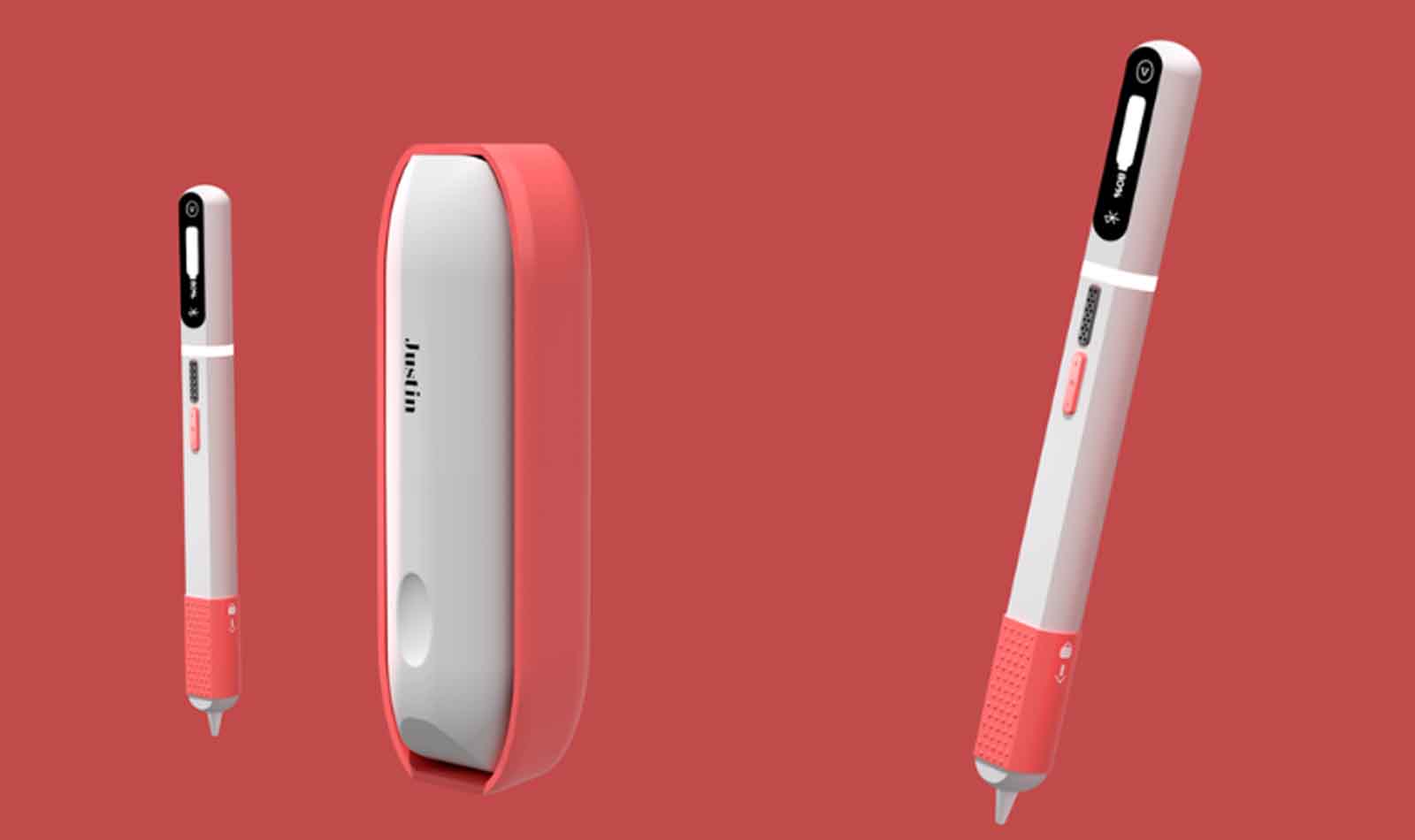An Italian-designed smart pen called Just in Time detects early signs of learning disorders in primary school children by analyzing handwriting, reading, and comprehension in real time.

©jamesdysonaward
School is often the first place where learning differences come to light. But too often, the official diagnosis comes late—when the first signs have already turned into frustration, delays, or worse, a sense of defeat. Now imagine if there were a simple, affordable tool that could catch those early signals before they grow into obstacles.
That’s the promise of Just in Time, a smart pen developed in Italy to analyze children’s writing, reading, and comprehension skills in real time. Designed for parents, teachers, and therapists, it aims to catch the often quiet signs of learning disorders—especially Specific Learning Disorders (SLD)—early on.
The pen records a child’s voice while reading, tracks handwriting with a special ink, and transfers the data to a display for instant, accurate feedback. Its name says it all: arriving just in time—before temporary difficulties harden into structured challenges.
How it works
At first glance, Just in Time looks like an ordinary pen. But hidden inside is a set of sensors and audio recorders that observe what the child writes and listens to how they read, turning that raw information into valuable insights.
During standardized paper tests—such as MT-3 or DDE-2 assessments—the pen:
- records the child’s voice, flagging phonological errors
- analyzes written text for grammar and spelling mistakes
- measures reading speed and accuracy
- checks text comprehension
Once the data is collected, the pen automatically suggests personalized reinforcement exercises, tailored to the child’s specific areas of difficulty.
The interface is intentionally simple: just two buttons (power and volume), traceable ink to digitize writing, a small display showing battery status or recording activity, a USB port to save data, and a case that doubles as a charger.
Because of this minimalism, anyone—teachers, parents, educators—can use it without technical training. It becomes a practical ally in both prevention and support.
Design born from empathy
The pen is the brainchild of Beatrice Pagliarusco, a student at Iuav University in Venice. She blended clinical research, educational observation, and thoughtful product design into one cohesive project.
The ergonomics are deliberately child-centered: the shape fits the natural finger posture of young students, while the structure is stripped down to ensure durability and ease of use.
But this is more than just clever design. Just in Time is educational, diagnostic, and compensatory at once:
For teachers, it offers guidance on whether a child might need further diagnostic testing.
For students, it provides support that prevents them from falling behind, while reducing performance anxiety.
For parents, it’s a concrete, early-warning tool that helps them act before problems escalate.
A glimpse of the future
Looking ahead, Just in Time could become as common in classrooms as tablets or laptops, ensuring that early diagnosis and equal opportunities are not a privilege tied to geography or school funding.
Its real value lies in turning technology into inclusion, giving educators and families actionable information while children are still developing their core skills.
Inclusion and innovation hand in hand
The project has been shortlisted for the 2025 James Dyson Award, an international competition promoting innovative solutions to real-world problems. Sponsored by the James Dyson Foundation, the award spans 28 countries and regions and supports young engineers and designers determined to create change.
Just in Time represents a significant step toward a truly inclusive school environment, where technology serves equity, not novelty. And who knows—maybe in the not-so-distant future, every child will have a Just in Time pen tucked inside their pencil case.
Source: jamesdysonaward
